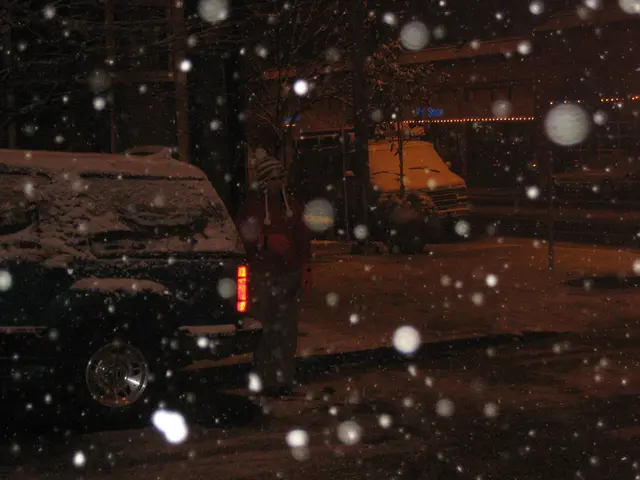Trump labels Putin as utterly mad, potentially stalling tactics at play
In a recent statement on his Truth Social platform, former US President Donald Trump expressed his concerns about Russian President Vladimir Putin's actions in Ukraine. Trump questioned Putin's sanity, criticizing the increasing loss of life under the Russian leader's command, not just among soldiers but civilians as well.
Trump's comments, though harsh, were not without a mention of Ukrainian President Volodymyr Zelensky, stating that continued friction between the two leaders is causing problems. The precise intention of Trump was not immediately clear, stirring speculation among experts about whether this might signal a shift in the war or a tactic to minimize the United States' role in the conflict.
Meanwhile, analyses of satellite imagery indicate that Russian forces have amassed troops and equipment at the borders of the Sumy and Kharkiv regions, potentially signaling a Russian intention to establish a buffer zone, as Putin himself had suggested in previous remarks. This could involve pushing Ukrainian forces back on their own territory, similar to what happened in Kharkiv almost a year ago.
Ukrainian military experts predict an intensified Russian summer offensive in the Donbass, with Russian forces increasing their attacks there. They appear to have made some progress in the region, particularly between Toretsk and Pokrovsk, potentially threatening Pokrovsk from another direction and bringing them closer to Kramatorsk.
Russia's strategic ambition remains the occupation of major cities in Donetsk, with the possible capture of Pokrovsk and Kramatorsk. However, analysts concede that it is unrealistic to expect Russia to capture all four regions it demands in the near future, with Russian forces having captured only 0.6 percent of Ukrainian territory last year at a heavy cost.
The war's attrition phase is fraught with unpredictability, as demonstrated by the massive Russian drone strikes from Friday to Monday. While Russia has improved its drone production capabilities, the Ukrainian air defense system is nearing exhaustion. This could potentially force Ukraine to a culmination point, increasing the pressure on the frontlines.
In light of these developments, Russia is likely to persist in its demands, including the surrender of the four oblasts and Crimea, as well as a pro-Russian government in Kyiv. The continued Russian pressure leaves Kyiv and most Ukrainians unwilling to accept these terms. The only power capable of countering this pressure is the United States, with Lindsey Graham and 82 other senators recently introducing a bill aimed at imposing higher tariffs on goods from countries, including China, that buy Russian oil, gas, uranium, and other products. The potential impact of this bill remains to be seen.
- The ongoing war-and-conflicts in Ukraine have raised concerns in the United States, as former President Donald Trump's recent statements suggest a potential shift in policy-and-legislation, stirring speculation among experts.
- Amidst growing tension, Russian forces, as analyzed by satellite imagery, have amassed troops and equipment at the borders of the Sumy and Kharkiv regions, potentially signaling a policy shift and a higher possibility of conflict escalation in the near future.
- In the realm of general-news, the Ukrainian military experts anticipate an intensified Russian offensive in the Donbass region, with sports-betting analysts cautioning that the unpredictable course of the war could affect betting odds in the sports world, particularly in relation to the ongoing Russian operations.
- To counter Russian pressure, politics in the United States have turned towards stricter legislation, with Lindsey Graham and 82 other senators recently introducing a bill aimed at imposing higher tariffs on countries, including China, that buy Russian oil, gas, uranium, and other products, thus impacting both national politics and the larger crime-and-justice system.








